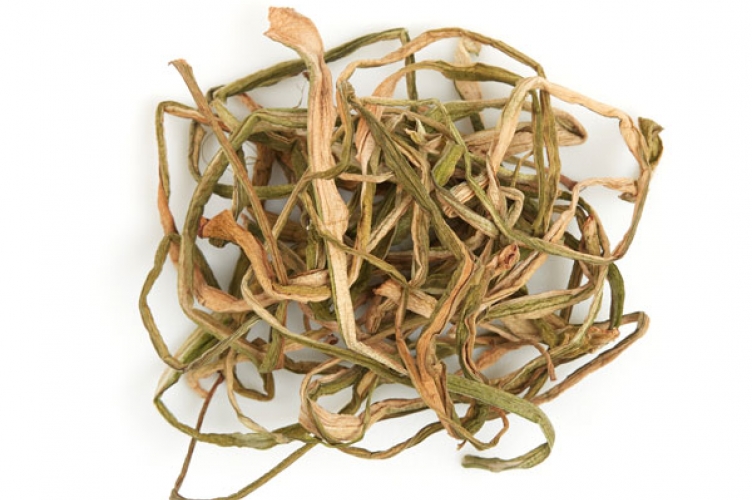Taro stem (To-ran-dae) 토란대

Taro is native to South India and Southeast Asia, and is a root vegetable eaten in many different cultures around the world. It's a rich history that includes Korea. The actual root of this vegetable is called Toran (taro) in Korean, meaning "the egg from land," as it is known for being full of nutrition. Taro stems are tough and spongy, ranging in color from white, yellow, lilac-purple and pink to reddish. Taro stems are a must-have ingredient for making yukgaejang, and they are often used in soup and stir-fry dishes. Taro stem is available both fresh and dried. Koreans tend to eat the dried version. Taro stems are known to be a great source of calcium and fiber, and low in calories. They contain vitamins A and B6, and minerals such as thiamin, copper, potassium, niacin, zinc, and iron. They should not be consumed raw because that is toxic. It contains raphides which are small needle-shaped crystals made of calcium carbonate or calcium oxalate. Oxalates also compromise calcium levels in the body and may lead to the formation of kidney stones. Raphides, however, can be reduced by steeping taro roots in cold water overnight.
** If you accidentally ingest raw taro stems, drink cranberry juice to counter toxins **
Sourcing & Selecting
Korean grocery markets
Fresh version- | |
When purchasing fresh ones, dry them for a couple of days. |
|
Remove skin off the fiber on the surface. |
|
Place in water for half a day to remove bitterness, and blanch. |
|
|
Dried and blanched version- |
Soak in water for 6 hours to overnight. |
|
After soaking, blanch lightly before use. |












